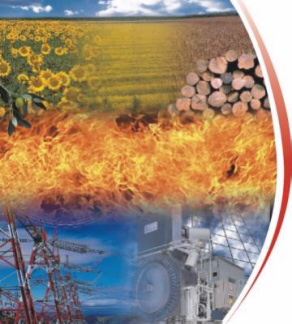|
What is it?- Biogas is derived from biomass, particularly animal wastes. It is typically composed of a combination of gases.
Like natural gas, biogas can be transported and stored easily. The combustion of biogas produces fewer pollutants than either
coal or biomass. For this reason, it is called a clean fuel.
How is it used?- Biogas is vastly used in Asia by such countries as China and India. In these two countries alone, there
are several million biogas digesters. A biogas digester is a large container that uses bacteria to break down household wastes,
including sewage, into a gas that can be used as a fuel. Methane is the most common gas produced from a biogas digester.
In India and China, biogas serves a duel purpose; household and agricultural wastes are decomposed to produce biogas
that is used for cooking and lightning. The solid remains that are left in the digester after a successful biomass conversion
are used as fertilizer. There is hope that biogas can generate electricity if it is used in fuel cells. In 1997 at Greater
Boston’s main sewage treatment plant, electricity was produced from biogas. The biogas, methane, was produced from
sewage sludge in biogas digesters. The biogas was able to provide electricity for 150 homes.
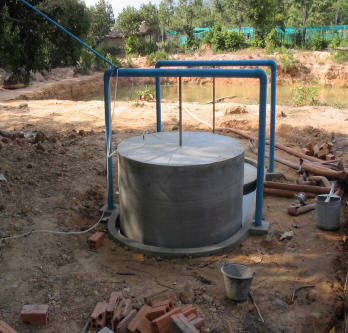
|
| First biogas digester in Cambodia (Dec. 2004). |
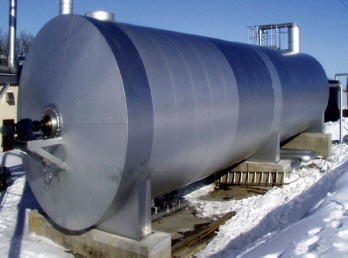
|
| In 2001 a biogas digester was installed in Yubetsu. |
www.snisd.org.cn/enhtm/20050126E.htm
http://www.oregon.gov/ENERGY/RENEW/Biomass/biogas.shtml
Bargasse
What is it?- Bargasse is the residual material left after the juice has been squeezed out of sugar cane
What is it used for?- there are currently many companies and scientist who are interested in knowing the feasibility
of converting bargasse into ethanol. A company in Louisiana, BC International, plans to convert bargasse into 20 million gallons
of ethanol a year. Additionally, over $10 million in grants for bargasse-based ethanol production facilities have sprouted
in Florida due to the 2006 Florida Energy Act.
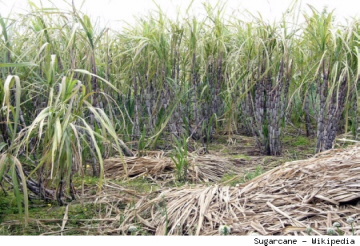
|
| Sugar Cane |
http://www.autobloggreen.com/tag/bargasse%20ethanol/
http://www.folkecenter.net/mediafiles/folkecenter
Ethanol
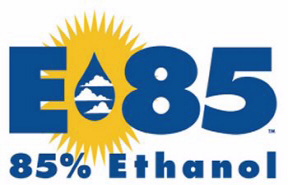
What is it?- a colorless, flammable liquid. It is converted from biomass into its liquid fuel form. Ethanol can be used in
internal combustion engines. A cleaner burning mixture, gasohol, can be attained by mixing gasoline with 10% ethanol.
How is it used?- While 10% ethanol can be mixed with 90% gasoline to create a fuel with lower gasoline emissions, there
are vehicles that run on E85 – 85% ethanol and 25% gasoline. A fuel that is 85% ethanol is deemed an alternative
fuel which qualifies its user for a government tax incentive. The carbon monoxide and carbon dioxide emissions from Ethanol-fueled
vehicles are typically lower than that of vehicles that run on gasoline. Ethanols increased usage would not just help our
nation be less dependent on foreign oil, but because it is produced using domestically grown crops like corn, sugar beets,
sugar cane, barley, and wheat, it would boost America’s agricultural sector economy.
A Canadian company has recently developed a more cost-efficient process to make ethanol from farm waste. Researchers
have found a way to make it entirely self-sufficient; the process they use to develop the inexpensive ethanol fuel produces
a byproduct called lignin, which can be burned as fuel to power the processing plant. This process could provide significant
amounts of renewable fuel in an environmentally responsible way.

http://www.fishercom.info/SciEd_eNewsletters/SciEd_HeadlineDisc/articles/article_fuel.htm
Biodiesel
What is it?- Biodiesel is a renewable energy source manufactured from vegetable oils, animal fats, or recycled restaurant
greases. When these fats and oils are combined with methanol, it produces the fatty acid methyl esters and glycerol. The fatty
acid methyl esters are the biodiesel; and the glycerol, a coproduct, is used for soaps, pharmaceuticals, and cosmetics.
How is it used?- Biodiesel fuel has great potential as a leader in alternative fuels; it’s biodegradable, burns
cleaner than its ‘rival’ petroleum diesel, and it emits much fewer toxins. Pure diesel, B100, produces
the fewest emissions. However, it can’t be used in all diesel engines without modifications to the engine. Biodiesel
fuels impact on engine durability is also questionable. B100 is a solvent that will degrade natural rubber hoses and gaskets.
It is also not suitable for winter use because it thickens in cold temperatures.
Like ethanol, biodiesel fuel can be combined in a mixture with other fuels to produce an alternative fuel that is
more eco-friendly. B20 is a blend of 20% biodiesel and 80% petroleum diesel. Unlike B100, B20 does not degrade rubber engine
parts and it can be used in any diesel engine without modifications. Due to the Energy Policy Act in 1998, biodiesel fuel
is used by the U.S. Postal Service, the U.S. Departments of Defense, Energy, and Agriculture, national parks, school districts,
transit authorities, public utilities, waste management, and recycling companies across the country.
http://www.fishercom.info/SciEd_eNewsletters/SciEd_HeadlineDisc/articles/article_fuel.htm
http://www.biodieselnow.com/
Biodiesel is widely available in the soybean growing regions
of the upper Midwest, as shown in the map below

|
| Location of U.S. biodiesel distributors |
|
